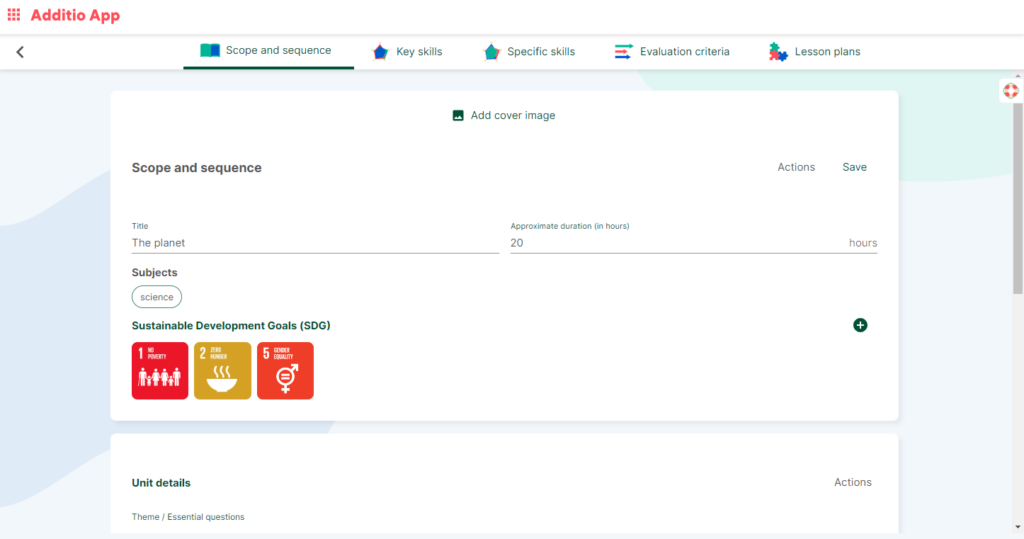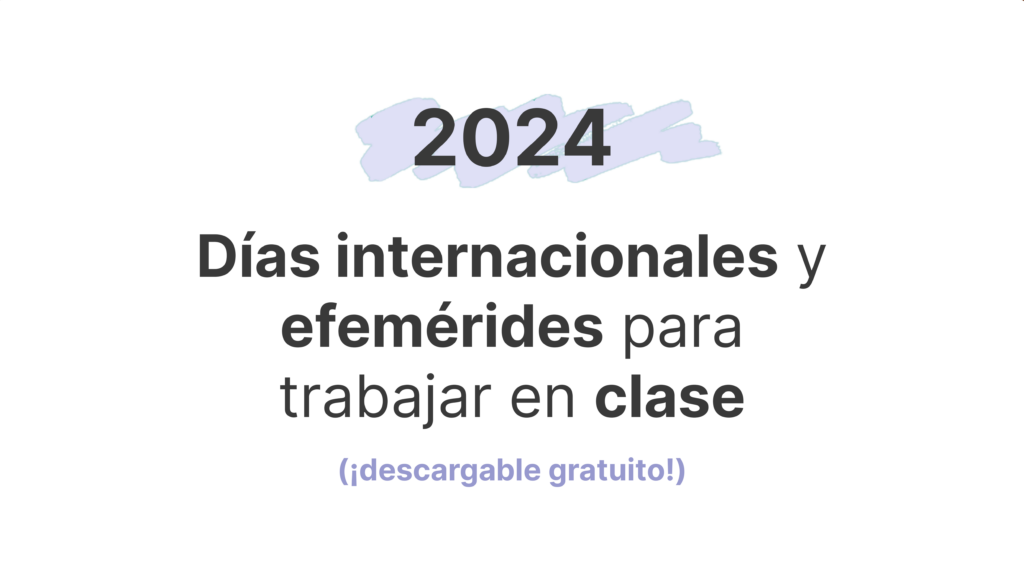In 2015, the United Nations adopted the SDGs, the Sustainable Development Goals, which are a global and universal call to end poverty, address the climate emergency and empower girls and women, by the year 2030.
Based on these 17 SDGs that we want to achieve, today we launch a new series of posts on our blog. And we are going to discuss each of these 17 SDGs, to see how we can work on them in class with the students. In this first post, we are going to see how we deal with the SDG 1: End of poverty.
Ready? We have a lot to tell!
Getting into the subject: What are the SDGs (Sustainable Development Goals)?
The SDGs (also known as the Sustainable Development Goals) are 17 global goals adopted by member countries of the United Nations in 2015. They are objectives that seek to address various global challenges, such as the eradication of poverty, the protection of the planet, or the empowerment of women.The aim is to achieve these objectives (along with their specific goals) by 2030, and they are all connected to each other, so that action on one of them affects the achievement of other objectives.
The 17 ODS that they are working on the 2030 Agenda are the following:
- End of Poverty
- Zero Hunger
- Health & Wellness
- Quality education
- Gender equality
- Clean Water and Sanitation
- Affordable and non-polluting energy
- Decent Work and Economic Growth
- Industry, Innovation and Infrastructure
- Reduction of Inequalities
- Sustainable Cities and Communities
- Responsible Production and Consumption
- Climate Action
- Submarine life
- Life of Terrestrial Ecosystems
- Peace, Justice and Solid Institutions
- Alliances to Achieve Goals
Something to highlight about the SDGs is that everyone contributes to its achievement: companies, governments, citizens… And that is why working on the SDGs in class can help enormously to build a society aimed at sustainable development and equal opportunities.
SDG 1: End of poverty, what does it consist of?
The first of the Sustainable Development Goals is SDG 1: End poverty. Long before the adoption of the 2030 Agenda, the eradication of poverty has already been one of the greatest social challenges worldwide. By achieving this objective, we seek to end poverty, guaranteeing equal access to basic resources and development opportunities.
Although the number of people living in extreme poverty has decreased in recent years,There are still more than 750 million people living in extreme poverty around the world.According to United Nations data, 1 in 10 people in the world are extremely poor. In fact,lWomen are more likely to live in poverty, due to inequalities between men and women.
More than 80% of the population living in extreme poverty is found in sub-Saharan Africa and South Asia, so these are areas that hardly see development in this area.
The data indicate that if the current trend continues, in 2030 there will still be 575 million people living in extreme poverty. In SDG 1: End poverty, The main goal is to eradicate extreme poverty throughout the world, and reduce the proportion of people living in poverty by at least half.
SDG 1: End poverty, what is being done?
Action to eradicate poverty in all its forms is taking place at a global, national and local level. Some of the measures that are being carried out are the following:
- National policies: In some countries, measures are taken to improve the living conditions of people in poverty, as well as to promote access to decent employment.
- Public awareness: Awareness and education campaigns are being carried out to raise awareness of the importance of eradicating poverty.
- Innovation: Some technologies and innovations can help improve development programs and create opportunities for people in situations of vulnerability and poverty.
- Private sector: Companies also have an impact on the development of this SDG, thanks to ethical business practices and sustainable job creation.
These are just some examples of actions that are being carried out to achieve SDG 1: End of poverty, but there are many more, we invite you to investigate them and tell us what you think.
So you can work the SDG 1: End poverty in the classroom
The educational field is key to raising awareness among young people about the importance of eradicating poverty and motivating them to take an active part in the development of actions. Below we leave you some ideas to integrate this SDG into the day-to-day life of your teaching:
- Link this SDG to your teaching units: at the time of create your teaching units (or import them from Additipedia), you can link the SDGs that are being worked on. If you do so, you will become aware of which teaching units work on this SDG and you will be able to integrate it into your classes. Remember that with Addition Starter, the free Additio App plan, you have access to teaching units and Additiopedia.
- Develop projects from your subject that integrate this SDG: The SDGs are multidisciplinary in nature, which means that they can be addressed in many subjects. A good way to work on SDG 1: End poverty in the classroom is to prepare class projects that put this SDG in perspective. That is, you can prepare a project that addresses the issue of poverty, always based on the contents of your subject. Here are some examples to inspire you:
- In Mathematics, you can create class exercises whose statements are based on the economic resources of countries in poverty.
- In Geography, you can address the countries that have the most poverty, detecting and analyzing with your students their economic, social, political conditions…
- In Ethics, you can encourage debate about policies and strategies that can be carried out to reduce poverty and promote greater distribution of resources.
- Organize talks or workshops: If you are a management team or tutor, you can invite experts to give a talk or workshop about poverty and the need to eradicate it. You can also bring the testimony of a person who has been in this situation and who has managed to get out of it thanks to the policies and actions that are being carried out.
- Offer resources: The United Nations has made free resources available to everyone to work on the SDGs (not specifically poverty), which you can share with your students. Some of these resources are the following:
- Lazy man’s guide to saving the world: a pdf document explaining what your students can do both at home and away from home, to help achieve the sustainable development goals.
- Frieda and the Sustainable Development Goals: This is a story aimed at the little ones, so that they become aware of the importance of the SDGs.
- 170 daily actions: This pdf document will help your students know 10 actions they can take to achieve each of the 17 sustainable development goals.

How do you integrate SDG 1 into your subject?
We are looking forward to hearing your opinions and proposals, since there are endless possibilities to integrate SDG 1 into the curriculum. Additionally, if you have a teaching unit that works on this SDG, we invite you to share it on Additiopedia, so that more people can work on it in their subject!
As always, you know that you can share your ideas and opinions with us on social networks: Facebook, Twitter, Instagram and Youtube.
We will wait for you!





